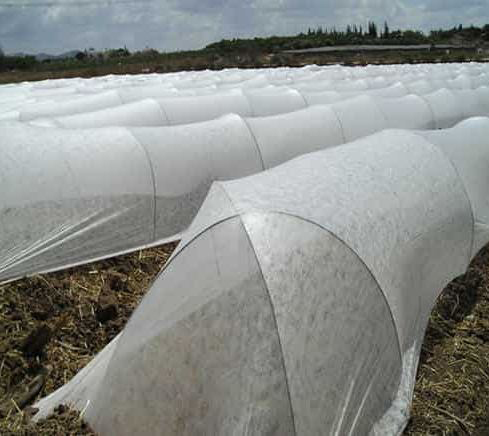
Non-woven industry development is a material that was born out of the petrochemical sector after the development of plastic cloth (film). Compared with plastic cloth, it is lighter and offers good ventilation. It is extensively used in personal hygiene and medical items, such as filters, facial towels and napkins for hygiene. Later, the technology was developed and then used in engineering. Non-woven fabrics are used to protect vegetables from cold damage. Non-woven fabrics are made differently from plastic films. However, the primary raw materials that are used in their production are similar. The materials used include PE (polyvinylchloride), EVA, Ethylene Vinyl Acetate copolymer), EVA and PVA (polyvinyl alcohol). It is possible to make a thin film of traditional plastic by melting it, then inflating. The film is continuous. It can stretch endlessly. The film's surface is devoid from pores. It is a completely inert film which blocks the exchange and movement of any molecules across the film. The industry of textiles grew quickly and artificial chemical fibers made of the mentioned materials became well-known. But , in essence these fibers are still formed into cloth by traditional warp and weft weaving. Non-woven fabric is made by interweaving the fibers at different angles in all directions. This is a different approach to traditional warp or weaving. It provides better material properties and is more easy to manufacture than traditional weaving materials. The traditional process of drawing fibers into them and then weaving is saved in production, meaning that the price is lower. In recent years, nonwoven fabrics are being used extensively in the fashion industry. The evolution of production technology and the advancement of material science has made non-woven fabrics more versatile and widely used over the past few years. We see the diverse materials and products in every moment of our lives. The increase in non-woven fabric usage in the field of agriculture is due to its lightweight, easy-of-production, diversity, cost effectiveness, and broad range of applications. Look at this non woven weed control fabric for tips.

Applications of non-woven fabrics in Agricultural IndustryNon-woven fabrics were first applied to agriculture in Europe in 1978 to keep carrots warm for early harvesting, and to prevent tomato leaf viruses and whiteflies. Non-woven textiles are used in the United States to mulch cantaloupes. Sweet peppers. tomatoes. Root vegetables. Carrots. Radishes. Cabbage. Lettuce. They are utilized for heat preservation and early harvesting. Since non-woven materials are able in boosting soil temperatures and are able to retain water, they are used for coverings on the surface, such as grass-proof mats. Short fibers are also utilized in the production of water absorbent blankets, which are applied on nursery beds so that the roots can fully absorb any water. They can be used as the base medium for turf production or as garden grassland to moisturize, drain, and divide the garden. They can also be utilized as planting bags to protect large woody plants like the fruit trees or garden trees, and retain moisture. In Taiwan, in addition to the mentioned functions non-woven fabric is employed in crop covering. They are also extensively used to control the environment of large greenhouses in order to conserve energy. Double-layered cover and canopy curtains cut down on heat radiation and solar radiation in the evening. TAVIK fabrics, which are non-woven, spun-bonded non-woven TAVIK fabric with high densities were first used for shading and protecting cauliflower bulbs. They quickly adopted it by farmers because of its thermal conductivity that was low as well as shading capability. Later, it was utilized to preserve leaf vegetables as well as their insect-proof cultivation. Later, it was used for shading, heating, and preserve fruit trees as well as pineapples. The development of non-woven industry has been slow due to Taiwan's unique ecosystem and climate. The nonwoven fabric producers in Taiwan continue to innovate in nonwoven technology. This includes water absorption, air permeability and water repellency. It is used in storage and preservation of agricultural products. See this agriculture non woven fabric suppliers for advice.
